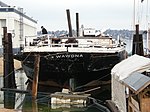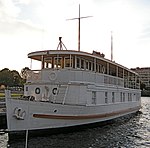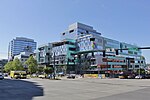Mirall
2015 establishments in Washington (state)2015 sculpturesOutdoor sculptures in SeattleSculpture stubsSculptures by Jaume Plensa ... and 3 more
South Lake Union, SeattleStainless steel sculptures in Washington (state)Statues in Seattle

Mirall is a sculpture by Jaume Plensa, installed outside the Allen Institute in Seattle's South Lake Union neighborhood, in the U.S. state of Washington. Located at the intersection of Mercer Street and 9th Avenue North, the 2015 painted stainless steel sculpture includes two seated figures facing one another, each made of letters from eight alphabets: Arabic, Chinese, Greek, Hindi, Hebrew, Japanese, Latin, and Russian. Kurt Schlosser of GeekWire said the figures appear to be in a "perpetual, silent conversation".
Excerpt from the Wikipedia article Mirall (License: CC BY-SA 3.0, Authors, Images).Mirall
Westlake Avenue North, Seattle Belltown
Geographical coordinates (GPS) Address Website Nearby Places Show on map
Geographical coordinates (GPS)
| Latitude | Longitude |
|---|---|
| N 47.62484 ° | E -122.33931 ° |
Address
Allen Institute for Brain Science
Westlake Avenue North 615
98109 Seattle, Belltown
Washington, United States
Open on Google Maps










